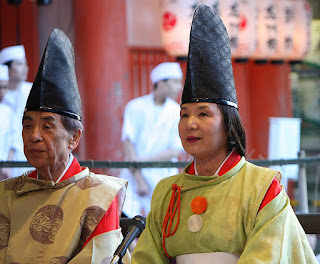I used to make up little stories that I would tell my kids to help them fall asleep. Here is one of them:
The Fish and the Water Snake
By Rita Jean Moran
Once upon a time, there was a clown fish named Timmy. Timmy was a wee lad fishy growing up in the big blue sea. He hung out with his mom and dad and the others in the school of fish. Timmy was generally a normal child fish except for one thing. Timmy had a water snake as a friend. The water snake’s name was Shari. Now ordinarily, fish don’t hang out with water snakes, but in this case Shari was very special to Timmy. Shari was kind, smart, and fun. She loved to explore the deep blue ocean and the top of the water. Most fish were very afraid to go to the top of the water because it was hard to breathe once they were out of water. But Shari knew how to breathe out of the water and Timmy would hold his breath.
One day, Shari came darting through the waves to find Timmy. Timmy saw her coming fast and furiously in the distance.
“Timmy! Timmy!” she exclaimed, “You’ve got to come with me and see something so fantastic, it’s too hard to explain,”
“What? Fantastic? Too hard to explain?” asked Timmy.
“Yes, come quick. Follow me,” said Shari.
Timmy told his parents he was going for a swim with Shari and would be right back. They told him he had to bring their older friend, Captain Bill with. Captain Bill was a 100 year-old sea turtle that hung around the same reef that the fish lived in.
“I’ll bring Captain Bill, with,” said Timmy.
Timmy got Captain Bill to come with. He and Timmy followed Shari through the deep blue sea and up and up until they were at the top of the water.
“I can’t go up there too long, it’s hard to breathe,” said Timmy.
“You can peak out of the water for just a bit and gulp water when you need to breathe,” said Shari, “but you have to see this.”
Captain Bill, Shari and Timmy popped their heads out of the water and looked up and over and saw something very strange. It was brown and green and yellow and pink. It was moving in different directions. It was tall and short. It was wide and skinny.
“What is that?” asked Timmy.
“Ah, I know what it is,” said Captain Bill.
“Can you tell Timmy and me,” asked Shari.
“Of course,” replied Captain Bill, “it’s a beach with what we call people.”
“Beach? People?” asked Timmy.
“Yes. People are land dwellers. I’ve seen them before. That’s a little girl building a sand castle. The little ones love the sand very much. The older ones like to sit in the sun.”
“What do they do?” asked Shari.
“They live like us. They have families and friends and good times and bad times,” said Captain Bill.
“I see,” said Timmy, “People are land dwellers.”
“Yes, people are land dwellers. But they will swim in the water when they want to. They love to play in the water just as much as we do,” said Captain Bill.
“Want to see something really cool?” asked Shari.
“Sure,” said Timmy.
Shari dove down to the bottom of the water and found an old gold coin. She picked it up and brought it over to the little girl’s sand castle and put it on top when the little girl was looking the other way. Then Shari swam back to Timmy and Captain Bill.
“Watch,” said Shari.
The group watched as the little girl turned to find the gold coin. She looked it over and got up and started yelling and jumping up and down until her mother ran over to see what the commotion was about.
“See how excited they get about old things?” laughed Shari.
Captain Bill and Timmy giggled.
“It’s just an old round thing,” laughed Timmy.
“Have you seen enough?” asked Captain Bill.
Timmy and Shari nodded.
“Let’s go home,” said Captain Bill.
Timmy, Shari and Captain Bill swam home and back to their families.
The End.
By Rita Jean Moran (www.thelibrarykids.com)
Source for Picture: http://en.wikipedia.org/wiki/File:Amphiprion_ocellaris_%28Clown_anemonefish%29_in_Heteractis_magnifica_%28Sea_anemone%29.jpg
Creative Commons Licensed and Released for Usage by Nhobgood Nick Hobgood

























